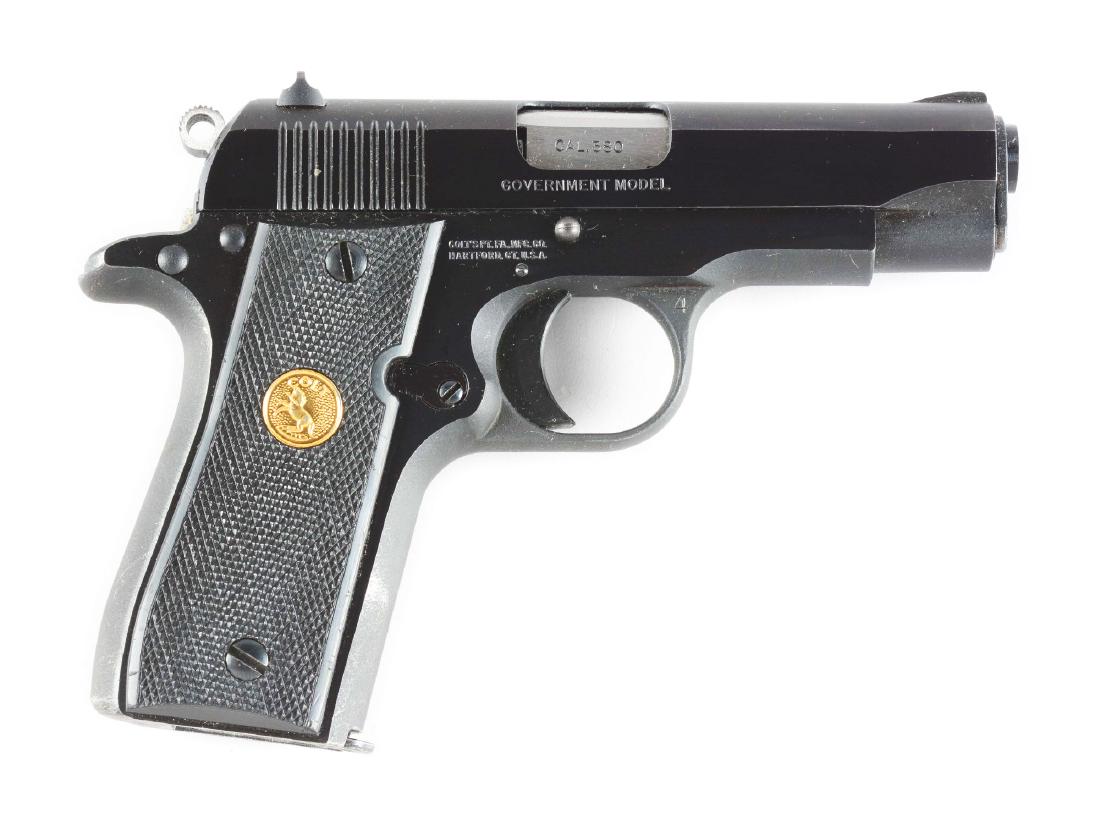

Thirdly, what people who gripe about the Series 80 don't know or won't admit to is that getting a slick factory gun involved a number of trips to a gunsmith back in the Series 70 era.
#COLT SERIES 80 SERIAL NUMBERS INSTALL#
Maybe install a flat blade trigger to eliminate creep. It is not complicated, and not even really expensive. You polish the trigger, put in a spring kit, maybe get the Series 80 kit from Cylinder and Slide.
#COLT SERIES 80 SERIAL NUMBERS HOW TO#
Secondly, smiths figured out how to do a Series 80 trigger job a long time ago. If that's what you're doing, you're doing it wrong. Staging the trigger is fine on, say, a Timney trigger in a competition rifle. However, if you apply uniform pressure and just squeeze straight to the rear, it's barely noticeable. If your trigger control technique is to pull the trigger in stages, you'll definitely notice the creep. However, these complaints are mostly bogus and for three reasons.įirst, you only really notice the trigger if you stack while pulling the trigger. The Series 80 was perceived as having a poorer-quality trigger than its predecessor. Colt had cut the trigger back for easier reach and shorter travel and thus broke easily. 45 was known for a very decent trigger right out of the factory. You'll notice the trigger slides back without any pressure, then hits the wall when you finally get the spring tension. Any Series 80 gun will have a little bit of take-up and creep to it. So, the addition of the firing pin block gives the trigger a little creep. Whether you want to listen to them is up to you. Okay, now we're onto the nitty-gritty: the Sertrigger. Some say it was a move to make the lawyers happy, but some point out that revolvers had transfer bar safety features starting the 1890s so there's no excuse for a semi-auto not to have something like that.


The Series 70 (and previous models) could be drop-fired if dropped directly on the hammer. Thus, the firing pin can only move IF the trigger is pulled.

On the Series 80, a pivoting link is actuated by the trigger pull, pushing the firing pin block up and unblocking the firing pin. However, the chief modification was the addition of a firing pin block safety. The first edition dropped in 1983, and a further revision occurred in 1988, when the collette bushing of the Series 70 was dropped in favor of the traditional solid bushing. The base model pistol of the Series 80 also no longer had the arched mainspring housing that the M1911A1 and Series 70 pistols did. The previous pistol had a hook notch that totally captured the sear, preventing the hammer from being released at half-cock. One of the first revisions was the half-cock notch, which was changed to allow the user to pull the trigger at half cock and drop the hammer, though without firing the pistol. What were the differences between the Series 70 vs Series 80? These updates were added in 1983 and were dubbed the "Series 80" since the previous revision to the base model gun was similarly dubbed the Series 70. The Series 80 is/was the term used to refer to a number of modifications made to the firing mechanism of the Colt 1911 pistol. Someone who says so is lying or doesn't know what they're talking about. What IS a Series 80, anyhow? Well, the Series 80 is a number of features added to the basic Colt pistol which were installed in the early 1980s, though not in the actual year 1980.Īre they as bad as everyone says? Not even close. What's really common to run across is people complaining about the trigger. You might have run across a magazine article, video or forum thread where people praise or complain about the Serpistol.


 0 kommentar(er)
0 kommentar(er)
